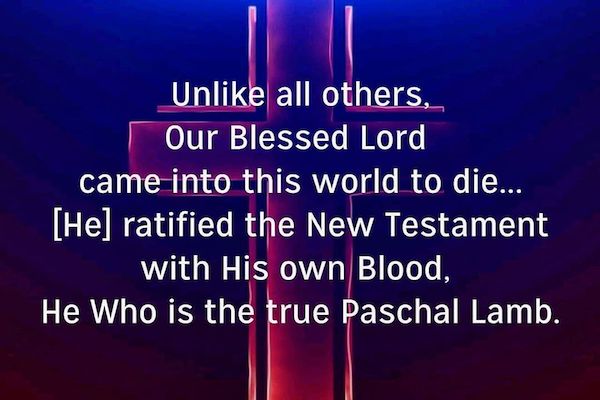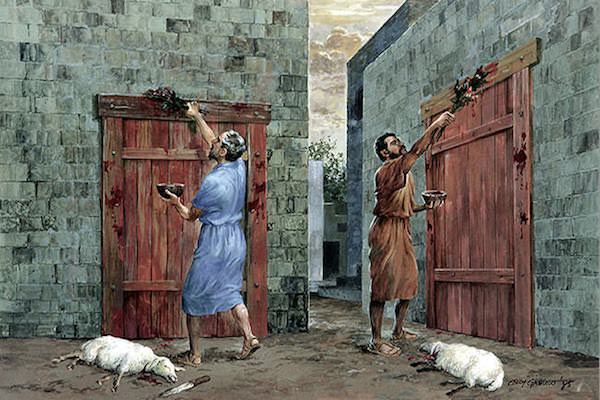LENT 2024: Day 13 - LIFE OF CHRIST

LENT 2024: DAY 13 - Wednesday February 28
“Unlike all others, Our Blessed Lord came into this world to die. Even at His birth, His Mother was reminded that He came to die. Never before did any mother in the world see death wrap its skeletoned arms so quickly about an infant Birth.
Since Our Divine Lord came to die it was fitting that there be a Memorial of His death! Since He was God, as well as man, and since He never spoke of His death without speaking of His Resurrection, should He not Himself institute the precise Memorial of his own death and not leave it to the chance recollection of men? And that is exactly what He did the night of the Last Supper… His Memorial would be the fulfillment of the Law and the prophets; it would be one in which there would be a Lamb sacrificed, not to commemorate political freedom, but spiritual freedom; above all, it would be a Memorial of a New Covenant.
A Covenant or Testament is an agreement or compact or alliance, and in Scripture it means one between God and man. At the Last Supper, Our Lord would speak of the new Testament or Covenant, which is best understood in relation to the Old. The Covenant that God mad with Israel as a nation was done through Moses as the mediator it was sealed with blood, because blood was considered as a sign of life… In the Covenants between God and Israel God promised blessings if Israel remained faithful. Among the principal phases of the Old Covenant were the one with Abraham with a guarantee of progeny, the one with David and the promise of kingship, and the one with Moses in which god showed His power and love to Israel by delivering them from bondage to Egypt and promising that Israel would be for Him a kingdom of priests. When the Hebrews were in bondage in Egypt, Moses received instructions for a new rite.
After the plagues, God struck the Egyptians further to prompt the release of his people by smiting the firstborn in each Egyptian house. The Israelites were to save themselves by offering a lamb, then dipping some hyssop in the blood, and marking their doorways with blood. The angel of God seeing the blood would pass by. The Lamb was therefore the Pesach or the Passover of the destroying angel, that is, a “pass” which secured safety. God then ordered it continuation year after year.
This institution of the slain Paschal Lamb mentioned in Exodus was followed by the implementation of the Covenant with Moses in which God made Israel a nation; it was the birth of the Israelites as the chosen people of God. The Covenant was concluded by various sacrifices. Moses erected an altar with twelve pillars. Taking the blood of the sacrifice, he poured one half of it on the altar, and the other half on the twelve tribes and people with the words: “Here is the blood of the Covenant which the Lord makes with you.” (Exodus 24:8) By pouring out blood on the altar which symbolized God or one party to the Covenant, and by sprinkling blood on the twelve tribes and people, which represented the other party, both were made partakers of the same blood and brought into a kind of sacramental union.
The Last Supper and Crucifixion took place during the Passover, when the Eternal Son of the Father mediated a New Testament or Covenant, as the Old Testament or Covenant was mediated through Moses. As Moses ratified the Old Testament with the blood of animals, so Christ now ratified the New Testament with his own Blood, He Who is the true Paschal Lamb. “This is My Blood, of the New Testament.” (Matthew 26:28)

(Chapter 36, pgs. 589-593)
+ FRASES PARA LEER